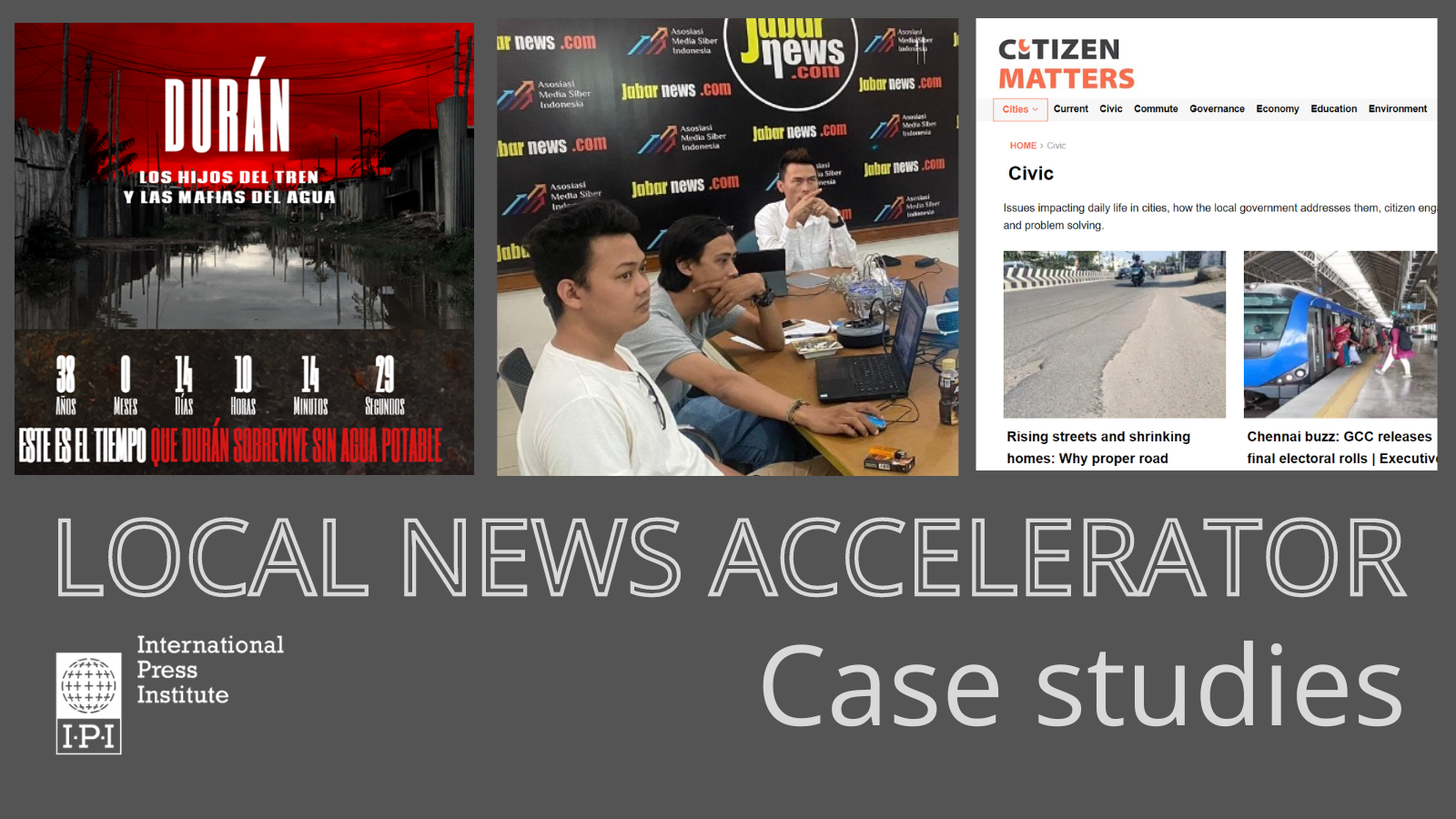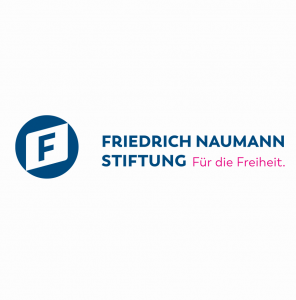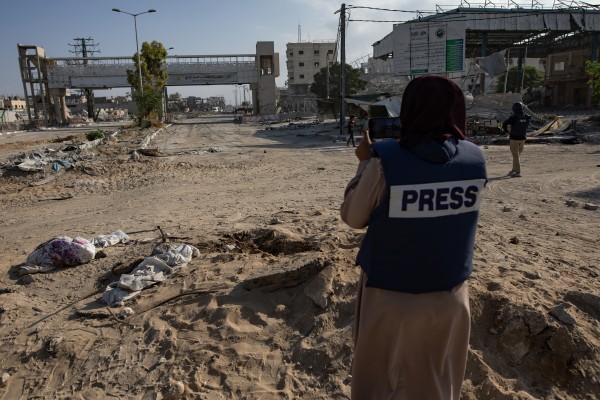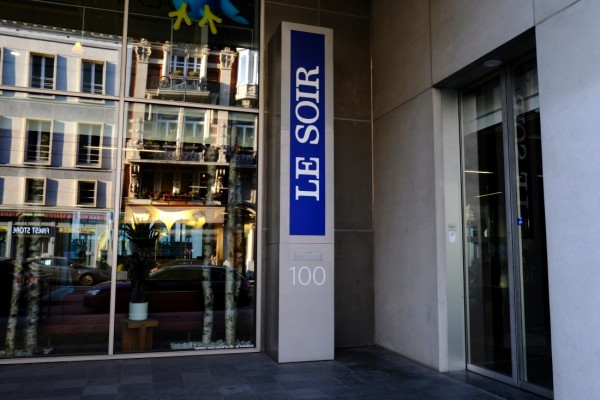Receive regular updates on IPI’s innovation and media sustainability work by subscribing to our newsletter, The Outlook: Media Innovation Unlocked.
Local news outlets play a critical role in serving communities and supporting healthy democracies, but these organizations are often vulnerable to financial and technological challenges.
IPI launched the Local News Accelerator to equip 12 local and niche media from across the globe with the skills to apply innovation and product development techniques to empower their teams and respond to the specific challenges in their context.
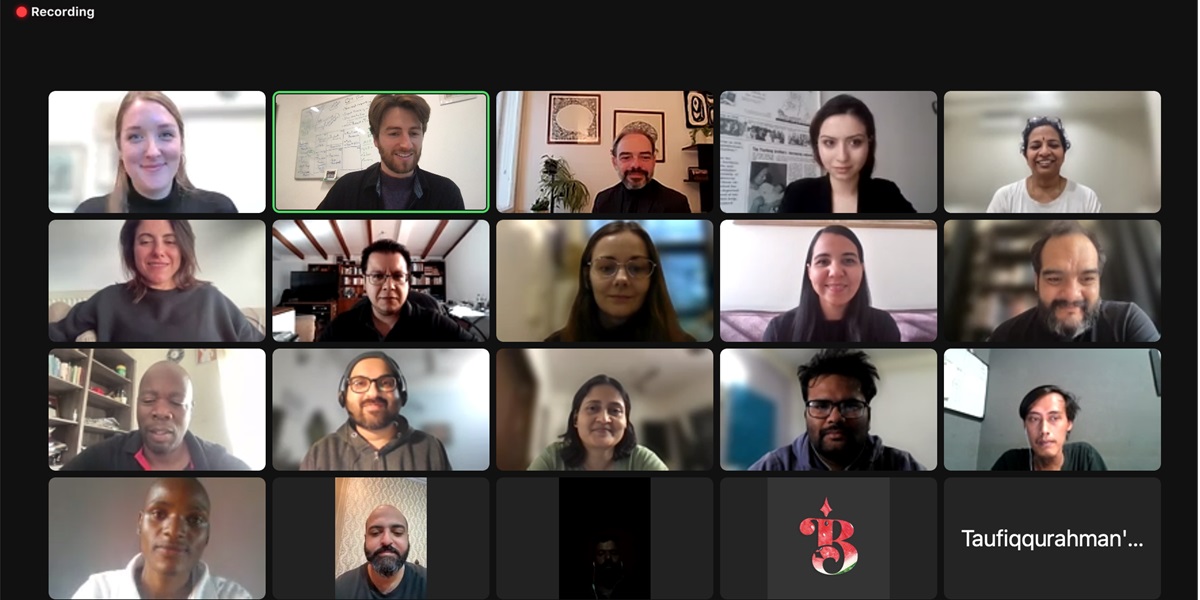
IPI staff and participants from the 12 local media during a Zoom training session.
Three of the newsrooms who participated in the accelerator share the steps their media have taken since participating in the programme.
The case studies were provided by the newsrooms mentioned, in their own words, and have been lightly edited by IPI for clarity and brevity.
From new digital platform to a well-structured media business – and fruitful partnerships
by Tierra de Nadie, Ecuador
Tierra de Nadie is an investigative journalism unit focused on peripheral areas and non-capital cities, where cases of corruption go unnoticed and the work of journalists is constantly threatened. It combines the publication of investigations with the training of reporters across Ecuador.
We love what we do, but maintaining a digital platform is daunting when starting from scratch, with limited resources, no organizational structure, and unclear short- and medium-term growth objectives. The challenges were apparent, but we didn’t know how to address them. The Local News Accelerator played a crucial role.
The first step was getting our house in order: we worked on an internal structure, defined roles, and assigned specific functions to team members. The second step was identifying the project’s growth needs, and differentiating between priorities and secondary goals. We associated each growth goal with an Objective and Key Result – OKR. This gave us a more structured idea of where we wanted to go.
It was at this point that what started as a digital medium for local journalism began to take shape as a completely innovative journalistic project for the Ecuadorian market.
We transformed Tierra de Nadie into a larger project where we can create new research units in different cities with centralized operations. We built our first research unit in Durán, the most violent city in Ecuador and South America. This was achieved through a significant alliance with a local media outlet, whose identity we must keep confidential. We will start creating editorial products with them, using research and audience-focused strategies to attract fresh economic resources.
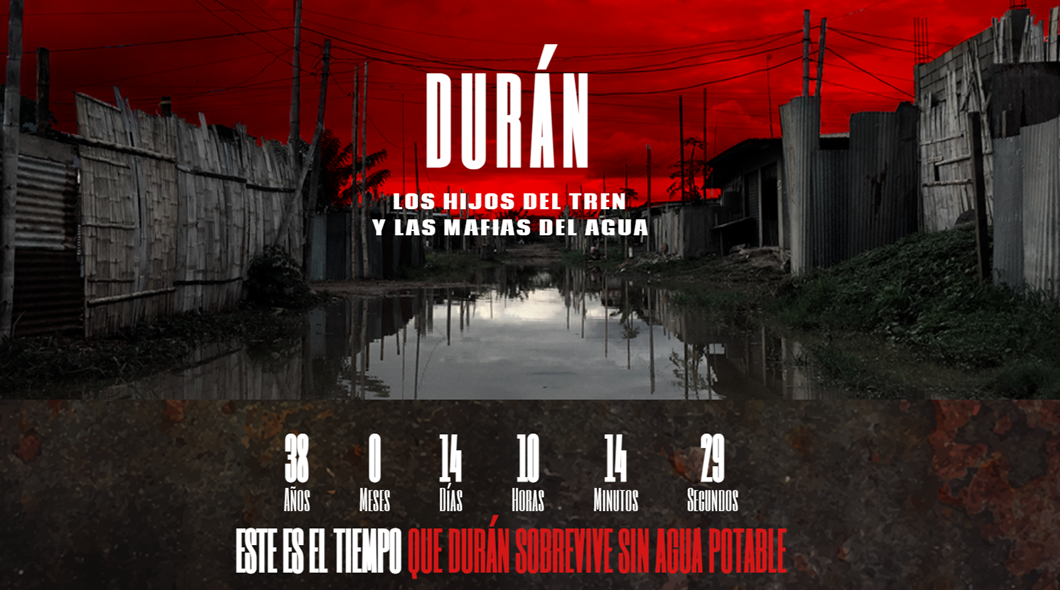
The homepage of the investigative unit in Durán.
In an effort to connect with audiences, we have also begun developing a communication strategy to enhance the image of Tierra de Nadie and the Durán Investigation Unit. This initiative aims to emphasize our commitment to investigative journalism, truth, and our readers.
After we had achieved a clear design for our project, an armed conflict erupted in Ecuador, confronting the country with organized crime and terrorism. This poses new challenges and urgent needs to protect freedom of expression and journalistic work, but we’ve already learned that challenges are also opportunities to innovate.
The work of Tierra de Nadie will always be tough, but we trust that we now have more tools to create opportunities. Additionally, the accelerator opened the door to a broad network of experts worldwide, always willing to share their knowledge and experience with us generously. We deeply value that.
Engaging young audiences on a crucial topic using focus groups to tailor content strategy
by Jabar News, Indonesia
Jabarnews.com is an online media outlet that covers fact-based information in Indonesia and produces ‘Jurnal Desa’, a programme that highlights rural issues. During the accelerator, our challenge was to identify the topics that our audience needs.
Based on focus group discussions with youth organizations, we found that many rural residents, especially the younger generation, were apathetic towards politics. They believed that the election results would not affect their lives, education, health, environment, or even their freedom of expression.
We decided to shift the focus of our content towards education, to help the young generation avoid apathy and understand the function of the democratic process.
We used the ‘User Needs for News’ model (which was first developed for the BBC World Service and has since been used and adapted by many news organizations). It categorizes content based on the job it achieves for the user, for example whether it helps them ‘know’ something – by providing facts and information – or helps them ‘understand’ a topic through explanatory and context-driven journalism.
We decided to focus on the ‘understand’ zone, to provide deeper knowledge about politics and democracy, in addition to the latest news. The aim was to empower the audience to make informed choices during elections, and to improve their awareness of election malpractices like political bribery.
The results were surprising. The political education content we created attracted the audience’s interest and briefly ranked among the five most popular articles on Jabarnews.com, even surpassing straight news articles on a molestation case, which was then a hot issue. This showed how the election could be a popular topic among our target audience, as long as we covered it in an accessible way.
Leveraging design thinking to develop a new product
by Citizen Matters, India
Citizen Matters provides in-depth civic journalism on local and hyperlocal issues and developments, exploring solutions to the problems at the root of these issues.
One of the ways in which we centre citizen voices is by publishing in-depth articles written by citizen journalists. However, we wanted to explore new ways of incorporating citizens’ knowledge and insight into our work. This led us to the idea of ‘The Change Network’, a ‘forum’ where citizen journalist fellows can provide regular, frequent updates on any particular issue.
Such updates are typically siloed within groups on social media channels. This means that many local developments are known only to a few residents. We wanted to offer a platform that would take these to a wider audience, opening up opportunities for journalistic coverage and also fruitful community exchanges.
Our participation in the IPI Local News Accelerator Programme has helped us move forward in this project. Modules on design thinking and product thinking helped us sharpen the framework and questions we use to assess what citizens want and need. We have woven in a combination of both pointed and open-ended questions, based on our learnings. This is extremely helpful for identifying the features that the new platform must have, and also the kind of follow-up coverage that our editorial team should look at.
We also conducted an internal design thinking session for our journalists based on input and direction received during the IPI programme. This has led to more local stories, better ideation and multiple formats. Examples can be seen in our recent coverage of the Chennai cyclone and floods.
The tools developed in the accelerator will also help us develop and strengthen our existing products, such as our regular weekly newsletter.
IPI’s Local News Accelerator is made possible with support from the Friedrich Naumann Foundation.

